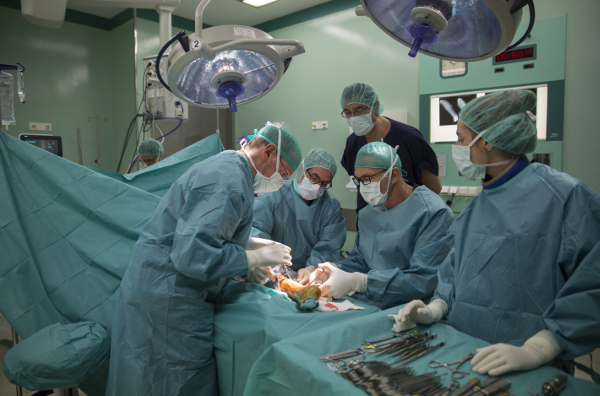Minimally invasive surgery

What is minimally invasive surgery?
In the strict sense, the concept of minimally invasive surgery (Minimally Invasive Surgery = MIS) is constantly evolving. Less Invasive Surgery (LIS) has been used in Orthopedic Surgery and Traumatology in knee arthroscopies for more than 40 years.
With minimally invasive (MIS) or less aggressive (LIS) surgical interventions we avoid significantly losing muscle mass and thus avoid excessive bleeding, the need for tissue reconstruction, and thus control pain much better.
What are its origins?
The idea of trying to reduce soft tissue aggression before any action by a doctor was popularized in the USA in 1990. Cardiologists and vascular radiologists prompted this trent trying diminish the complications related to coronary artery explorations and treatments. Subsequently, this idea expanded its applications to foot surgery, spinal surgery, arthroscopic surgery of any joint and, ultimately, to the treatment of fractures.
What are the advantages and disadvantages of minimally invasive surgery?
Advantage:
- It reduces the trauma of soft tissues (muscles, tendons, joint capsule ...).
- Less blood loss, less pain, faster recovery. By cutting fewer muscles, tendons or ligaments, blood loss is better controlled during prosthesis intervention. The postoperative pain is less, while the healing process and rehabilitation are faster.
- Better stability of components. A prosthesis is formed by two independent pieces that are held in place thanks to the muscles and tendons that surround it. With minimally invasive surgery, these soft tissues suffer less aggression, so they can better perform the support function of the prosthetic components.
- Better aesthetic results. The size of the incision (and therefore of the scar) in a hip prosthesis implanted by arthroscopy (mini-incision) is about 7 cm, compared to 20 cm of conventional techniques.
On the other hand minimally invasive surgery does have some drawbacks with respect to conventional surgery: the surgeon has a more limited visualization, it is more complicated to orient the two components of the prosthesis (femoral and acetabular) and requires an advanced experience in the surgical technique .
Can all interventions in Orthopedic Surgery be done with minimally invasive techniques?
Theoretically yes. Being a recent technique, its use extends exponentially. To date the most common procedures performed by minimally invasive techniques in the specialty of Orthopedic Surgery and Traumatology are:
- Spinal surgery (removal of hernias)
- Foot surgery (bunions)
- Arthroscopy of shoulder, knee, hip, ankle, wrist, etc ...)


